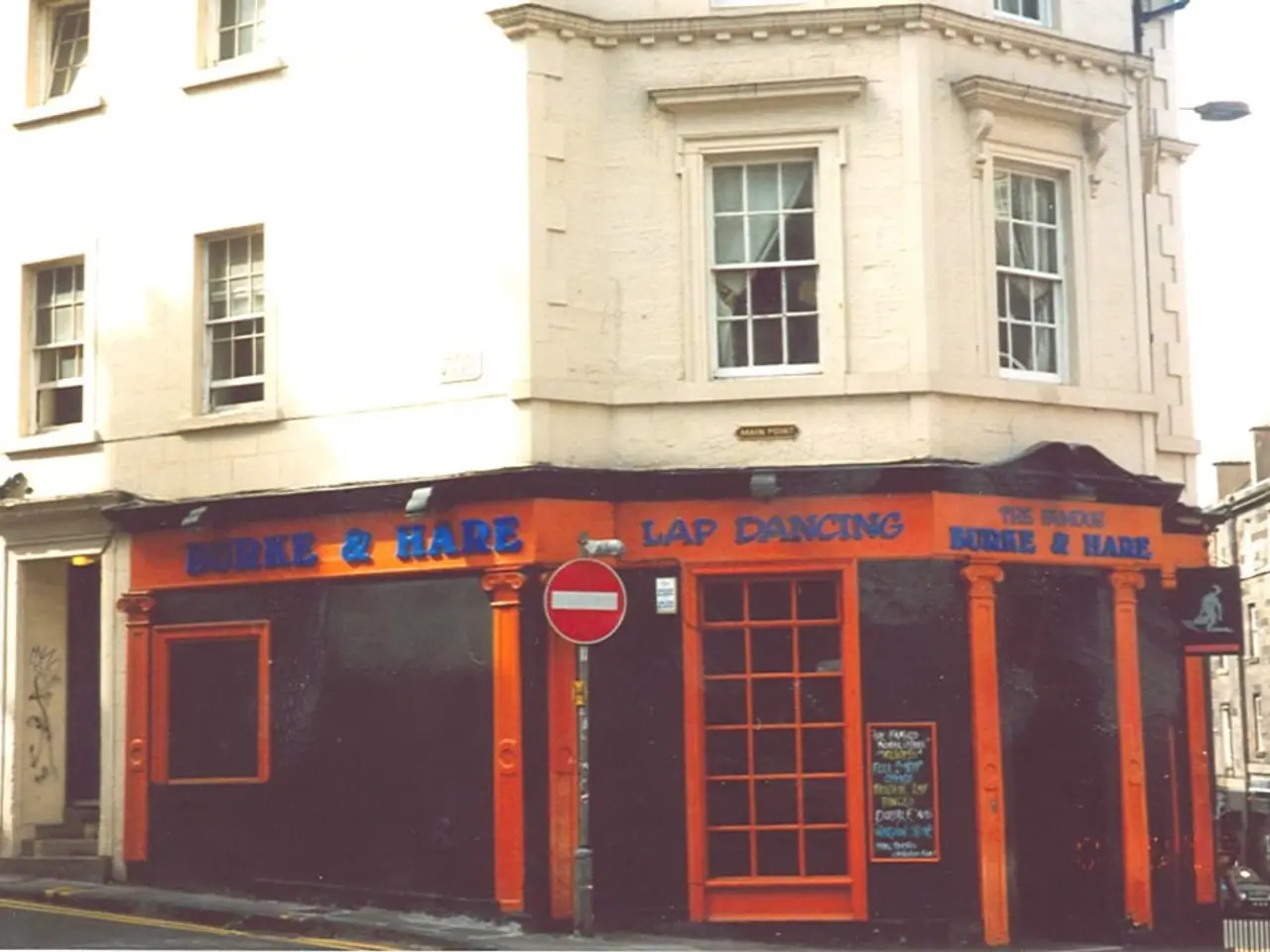Transformation of the Stasi Building in Berlin-Lichtenberg to a Residential Complex
In the heart of Berlin, a new approach to urban development has emerged, aiming to alleviate the city's housing crisis. Since 2017, the introduction of the "Urban Area" building code has allowed for the coexistence of residential and commercial spaces, as well as social, cultural, and other facilities that do not significantly disturb residential use. However, the Senate Department for Urban Development does not see this as a significant solution to the housing shortage, contributing only minimally to relief.
One innovative solution that has gained traction is the conversion of vacant offices into affordable housing, much like the successful "Magda" housing project in Lichtenberg. This former office building, once the district office after the Stasi, was saved from demolition by its house community, who bought the building opposite the women's prison and converted it into affordable housing. The inner structure features 16 square meter rooms, with some walls removed to create larger communal areas for individual WGs, and includes spaces not typically considered living areas in office buildings, such as integrated kitchens and partially integrated living spaces in hallways.
The renovation of the "Magda" housing project involved replacing windows, installing new bathrooms and water pipes, insulating the roof and floor slab, and placing a thermal insulation belt around the house. Jan Müller, a supporter of this approach, recommends others to follow the example of the "Magda" project and buy and convert vacant properties into affordable housing. Eike Roswag-Klinge, president of the Berlin Chamber of Architects, considers the "Magda" project as a potential model for creating very affordable living space with simple means.
However, converting office buildings into affordable housing involves several practical, legal, and economic considerations. Office buildings often have deep floorplates unsuitable for apartments requiring natural light and ventilation on both sides, limiting apartment width often to 14 meters or less, affecting the layout and efficiency of the conversion. Changing the use from commercial (office) space to residential requires official permits and zoning adjustments, with Berlin’s use of conversion ordinances and milieu protection areas potentially restricting or slowing down these changes in certain districts. Residential buildings have different safety, insulation, and ventilation standards than office buildings, meaning significant upgrades or design modifications may be necessary.
Economic factors also make it challenging to switch from office to residential use in the office sector. The "housing as infrastructure" approach, gaining traction in various cities, suggests that framing affordable housing as essential infrastructure could unlock long-term investment and policy support, potentially making conversions more financially feasible. Bulwiengesa, an analysis company in the real estate industry, calculated that around 1.5 million square meters of office space are empty in Berlin, with potential for converting 2 million square meters into 30,000 new apartments.
Despite these challenges, Berlin has an incredible amount of room to densify or convert existing buildings to create affordable housing. Roswag-Klinge suggests that the vacancy rate in buildings may be higher than reported due to administrative landlords and owners of large properties not making their vacancies transparent. Vacant properties can be found in peripheral locations such as industrial estates in Marzahn, Mariendorf, or Reinickendorf.
In conclusion, successfully converting office buildings into affordable housing in Berlin requires overcoming design limitations tied to office layouts, navigating strict planning and building regulations, and ensuring economic viability amid high renovation costs. Policy innovations that treat housing as essential infrastructure and streamlined permitting could help address these challenges by attracting sustained investment and accelerating approvals. Berlin’s evolving districts show potential but also highlight the need to balance growth with social and legal protections to maintain affordable housing stock.
The conversion of vacant office buildings into affordable housing, demonstrated by the successful "Magda" project in Lichtenberg, presents an innovative solution to Berlin's housing shortage. Moreover, by treating affordable housing as essential infrastructure, policy innovations could attract long-term investment and streamline permissions, making conversions more financially feasible and accelerating the creation of additional home-and-garden spaces within the city's urban lifestyle.




